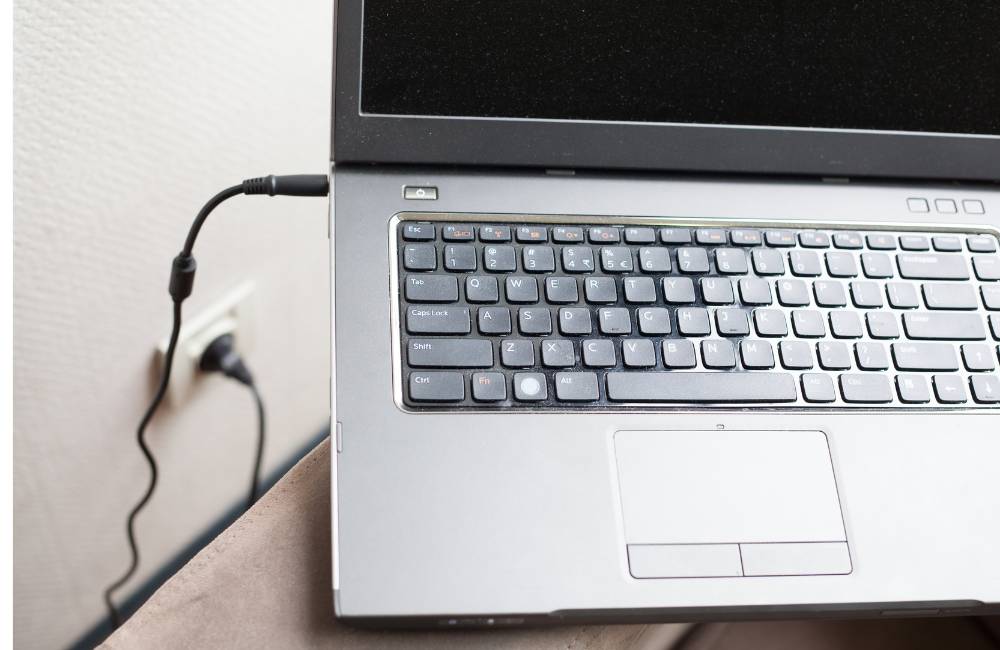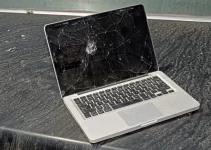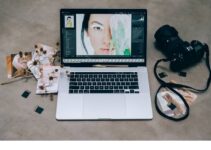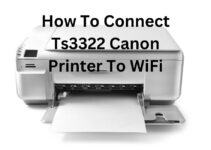Have you ever experienced your laptop beeps when charger is plugged in? I am pretty sure it’s irritating, sometimes! This beeping sound can signal a problem once it’s plugged in, and is often caused by hardware or software issues.
We all know how inconvenient it is when our laptops start acting up. From slow charging to random crashes, this type of behavior will usually leave us feeling frustrated and desperate for help. One such problem that many laptop users encounter is frequent beeps coming from their laptops when they plug in the Charger or Power Adapter.
However, some causes are fairly innocuous while others may require professional intervention.
In this article, we discuss the potential problems that could cause your laptop to emit these high-pitched noises when charged. And what solutions and preventative measures you should take in order to rectify them.
Why Laptop Beeps When Charger Is Plugged In?
If your laptop beeps when charger is plugged into power, it is most likely due to a problem with the power supply or charging cord. This usually happens because there is a problem in the power circuit or the circuitry between the power supply and the laptop’s components.
It could also be an issue with a loose connection, the battery, an internal short circuit, or a defective charging cord. In any case, this issue should be addressed immediately by a qualified laptop repair technician to ensure that your laptop continues operating properly. You may also hear this alarm coming from your laptops while plugging and unplugging the power cable.
Read Also: Is MacBook Air Good For Programming
Laptop Adapter Beep Sound VS Motherboard Beep Sound
The difference between an adapter beep sound and a motherboard beep sound is in the type of audio signal it produces. An adapter beep sound is produced by a specialized piece of hardware called an adapter and is usually accompanied by an LED light.
Whereas a motherboard beep sound is emitted directly from the motherboard and can often contain multiple tones that signify different types of errors or issues. Both sounds are essential for diagnosing potential computer issues, but knowing which one you are hearing can help you focus your troubleshooting efforts more efficiently.
Read Also: Are MacBook’s Worth the Price?
Possible Solutions To Fix Beep Sound
To solve the “laptop charger making noise” issue, try checking the power cables and ensuring they are securely connected. Additionally, check if the AC adapter is working properly by trying it on another device or power source, or testing it with a multimeter.
Alternatively, you can turn them off by reviewing the BIOS setting, called “power-on self-test” option. Here, we listed out a few tips to fix a laptop adapter making beep sound for days.
- Ensure that the adapter is firmly plugged into both the power outlet and laptop port. If not, plug them back in securely and try again.
- Try using a different wall outlet or power strip to eliminate potential power issues as the source of the beeping sound.
- Check all cords and cables for fraying, corrosion, or damages as they may need to be replaced if they are too worn out.
- Inspect the adapter itself for scorch marks or burning smells which could be signs of an internal short circuit or burnout and will require a replacement original adapter set.
- Make sure that your laptop is running on its updated version of the operating system, hardware drivers, BIOS updates, etc., to use the full capabilities and stability of your device with any components it is connected to.
- Consider replacing the battery in your laptop as it may no longer be able to accept a sufficient charge from the AC Adapter if it has aged over time and needs to be replaced or serviced accordingly.
- Reset your computer’s System Management Controller (SMC) once by unplugging the AC Adapter from the laptop while powered off, then press & hold the left SHIFT+CTRL+OPTION keys on the Macbooks keyboard and power up at the same time. Release the keys after a few seconds then plug in the AC Adapter again and check if the issue persists or not.
- Use a voltmeter/multimeter to measure voltage beyond (Laptop Port Plug Socket Side). This way you can ensure that the correct electric current flow/voltage reaches the Laptop Port whenever the AC Adapter is plugged in via the Socket Wall Outlet side. It can help to identify faulty adapters that usually cause sudden malfunction without prior notice.
- If possible replace the AC Adapter after inspection of various Advanced Custom Diagnostics examination tips provided on this web page, else consult the nearest service center for further assistance.
You might find some other ways to get rid of this problem, in recent days. However, we wrote all we have so far. There are many good resources on this particular issue but in a messy format. We hope these tips helped you a lot.
Read Also: Why Does My MacBook Mic Sound Like A Robot
Advantages and Disadvantages of Beep Sound Alarm

The beep sound alarm in a laptop computer has both advantages and disadvantages. The advantage of using this is that it provides an instant notification or alert when the user needs to take action on something. Additionally, it’s easy to customize with different beeps and tones for different purposes.
On the contrary, these beep alarms in laptops can be quite annoying and distracting if overused or used at inappropriate times, reducing overall productivity. Ultimately, utilizing a beep sound in laptops can prove to be helpful as long as it is used in small doses and only for highly important notifications or alerts.
Read Also: How To Uninstall Vst Plugins On Mac?
What Do Different Beep Sounds Mean in Your Laptop?
One beep: This is an indication that the boot process has been completed successfully.
Two beeps: A high-pitched two-beep sound means there was a memory issue during the startup process.
Three beeps: This is an indication that there is a problem with the main system board components such as CPU, RAM, or motherboard and needs to be addressed immediately by a technician.
Four beeps: A short high pitched series of four beeps usually means that the laptop has had a BIOS update recently, and it’s indicating that it’s now complete and can launch the operating system.
Five or six beeps: Several short successively higher pitch beeps may mean there’s an error with the fan speed or temperature of some other component in your laptop and it should have further investigation from a technician to address this issue properly.
Seven Beeps: An extended series of long low-pitched seven beeps signals either an issue with video card BIOS or video RAM; you may need to reset these settings in the display control panel of your device settings menu which can generally diagnose and fix most resource allocation errors like this quickly without needing any outside help.
Read Also: Is A Laptop Better Than A Desktop
How Does It Cost To Fix Beep Noise From Laptop?

The cost to fix this noise in your laptop will depend on what is causing the beep. Generally, there may be software issues at fault, in which case the repair would likely include resolving any incompatible software and programs or updating them.
On the other hand, if there is a hardware issue, then the repair could be more expensive as you may need to replace parts like the system fan, speakers or hard drive. If it is just a dust buildup then you can take preventative actions like cleaning out your laptop with a vacuum cleaner or compressed air canister.
So, if there is no such inconvenience in the major hardware components then it will cut no cost to you. You can fix it on your own with a simple DIY task.
Read Also: Is Laptop Allowed in Flight
FAQs: on laptop beeps when charger is plugged in
How can I stop the beeping sound my laptop makes when I connect it in?
After restarting your laptop, continually press one of the following keys to activate the BIOS Setup utility: F2, F12, DEL, ESC, etc. Search for “Power Beep,” “Power Control Beep,” or a comparable option in the BIOS settings using the arrow keys, then set it to Disabled. After making your adjustments, leave BIOS.
What do beep codes indicate in a laptop computer?
Beep codes indicate errors which occur during the initial hardware testing phase when a laptop is first turned on. This is sometimes referred to as the POST (Power On Self Test) stage and is used to identify potential hardware issues with your laptop, such as a faulty RAM module or inadequate BIOS settings.
Why does my laptop make a beeping sound all the time?
The type of beep your computer makes when it starts up is supposed to tell you what’s going on with it. If your computer makes a long, continuous beep, it usually means there is a hardware problem, usually with the memory, that can stop it from starting up at all.
Why is my HP laptop making beeping noise?
If the computer gets too hot, it might beep to warn you. You should clean the computer’s vents to get rid of any dust.
How do I turn off the beep sensor mode?
In order to turn off the beep sensor mode in a laptop, you will need to access the BIOS settings. To do this, first shut down your laptop and then restart it while tapping the F2 key to enter the BIOS settings. From there, look for an option called “beeper” or “acoustic feedback” and disable it. Once complete, save your changes and exit the BIOS settings.
How many types of beep sounds are in a computer?
There are typically two types of beep sounds in a computer: the POST (Power-On-Self-Test) beeps, and the beeps generated by the operating system when errors occur. Alternatively, you may also experience your laptop charging adapter making a beep sound.
Why beeps when I plug in my Acer laptop?
Yes, it is typical for the charger to beep once when it is plugged in or unplugged. You can silence it by selecting the Realtek HD Audio Universal option in the volume mixer.
Conclousion
We hope you got an overall idea about the laptop beeps when charger is plugged in. It has several potential causes such as a faulty power cord, a damaged charging port on the laptop, an issue with the internal battery, and software or other hardware issues.
Fortunately, resolving this problem is relatively straightforward and can often be done by replacing the power cord and making sure all connections are secure or by getting the laptop serviced at a local repair shop. While it may seem daunting to attempt to fix this issue yourself, doing so can save you time and money.
Read More:
How to Upgrade a Gaming Laptop
Which Three Parts of the Computer Receive Input
How to Turn on Lenovo Laptop Without a Power Button





